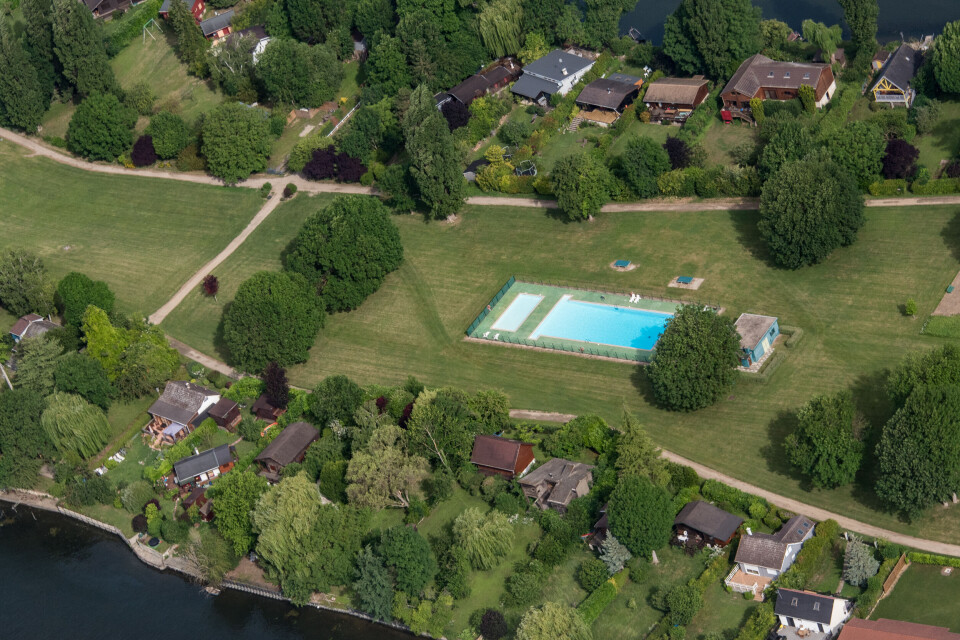-
Paris pledges action against voyeurs in public swimming pool changing rooms
It comes after several women came forward to report similar sexual assaults
-
France identifies undeclared pools with satellite technology
A total of 100,000 properties face fines if they do not decalre their swimming pools to the tax authorities
-
Property tax deadline is extended in France after website crashes
Thousands logged on simultaneously to pay their taxe foncière bill just before midnight deadline
How French tax authorities are tracking undeclared swimming pools
A new AI aerial photo tool is being tested in some parts of France, but some critics say it is far from foolproof and could see residents landed with unfair taxe foncière bills

French tax authorities are now using artificial intelligence software to detect non-declared swimming pools (which require extra taxe foncière payment) – although critics doubt its reliability.
Since the start of 2021, the government body in charge of tax, la Direction générale des finances publiques (DGFiP) has been developing an AI tool in partnership with Google and the Capgemini company, with a budget of €24million.
The teams have been testing and developing the tool in nine pilot departments: Alpes-Maritimes, Var, Bouches-du-Rhône, Ardèche, Rhône, Haute-Savoie, Morbihan, Maine-et-Loire and Vendée.
The ultimate aim is to roll out the software nationwide by autumn 2022, should the pilot schemes be deemed successful.
The system works by consulting aerial view photos from the Institut national de l’information géographique et forestière, to detect the presence of existing swimming pools, and compares this with the new information.
Tarpaulins and solar panels counted as pools
However, the CGT union, which represents workers in the state finance sector, claims that the tool currently has a high level of error; as high as 30% in some cases.
Frédéric Scalbert, national secretary for the union CGT Finances publiques, told Le Figaro: “Farming tarpaulins have been [wrongly] identified as pools, because they are blue. Even solar panels, as soon as there are more than a few of them, have also been identified as pools.
“Industrial tanks that contain [farming] liquids have also been wrongly considered to be swimming pools,” he said.
The DGFiP denies that this level of error would remain should the tool be rolled out nationwide.
It said: “The percentage of error mentioned is variable according to the departments and is still in the test phase. This is not at all indicative of the final performance of the tool.”
However, Mr Scalbert also said that the tool is inaccurate even when measuring pools.
He said: “The software detected a 56 square metre pool when it was only 28 square metres. The property tax of the owner concerned could double as a result.”
The average taxe foncière is around €12 per m2, which equates to around €300 per year for a 4x8m pool.
The DGFiP said that the tax is calculated based on “the surface area declared by the owner or, in the absence of a declaration, the surface area calculated by an operator referring to an aerial photograph.” It denied that the AI tool algorithm would be used to calculate tax levels alone.
Mr Scalbert said that the tool is also liable to other errors. He said: “There are also other problems with the system. For example, if shadows cast by trees or even the house itself hide the pool, the software may not detect its presence.”
He denounced the tool as “a political desire to show that it is feasible in the long term to no longer send surveyors into the field, and thus to do without them”.
He said that France was facing a shortage of surveyors, and that residents could end up paying the price, as local authorities would try to use this tool alone, without sending people into the community.
However, the DGFiP defended the tool, saying: “The principle of artificial intelligence is that it 'learns' and improves as it goes along. It is therefore normal that there will be adjustments, particularly during the experimentation phase.”
It added that “at this stage of the experiment, letters requesting information are sent to taxpayers and not letters of adjustment [of taxes]".
It states that this experimental phase is merely a "dialogue phase" and that "taxpayers will still have the possibility of contesting” a tax if they believe it to be incorrect.
What is taxe foncière?
The taxe foncière local property tax is potentially payable, barring exemptions, if you owned French property on January 1 of a given year.
The revenue goes to your mairie and in some areas a part goes to an intercommunal body, to fund local schools, sports facilities, and projects such as roadworks.
The owner of the property usually pays it, even if it is rented out.
It is payable by main home owners and second-home owners, although there are several reductions or exemptions, linked to factors such as age, disability or income.
Related articles
Taxe foncière France's local property tax: Who pays and the exemptions
Steep rises for many French taxe foncière bills amid high inflation
French tax office to work with Google to spot undeclared pools
French tax office begins to use aerial shots to find undeclared pools
























